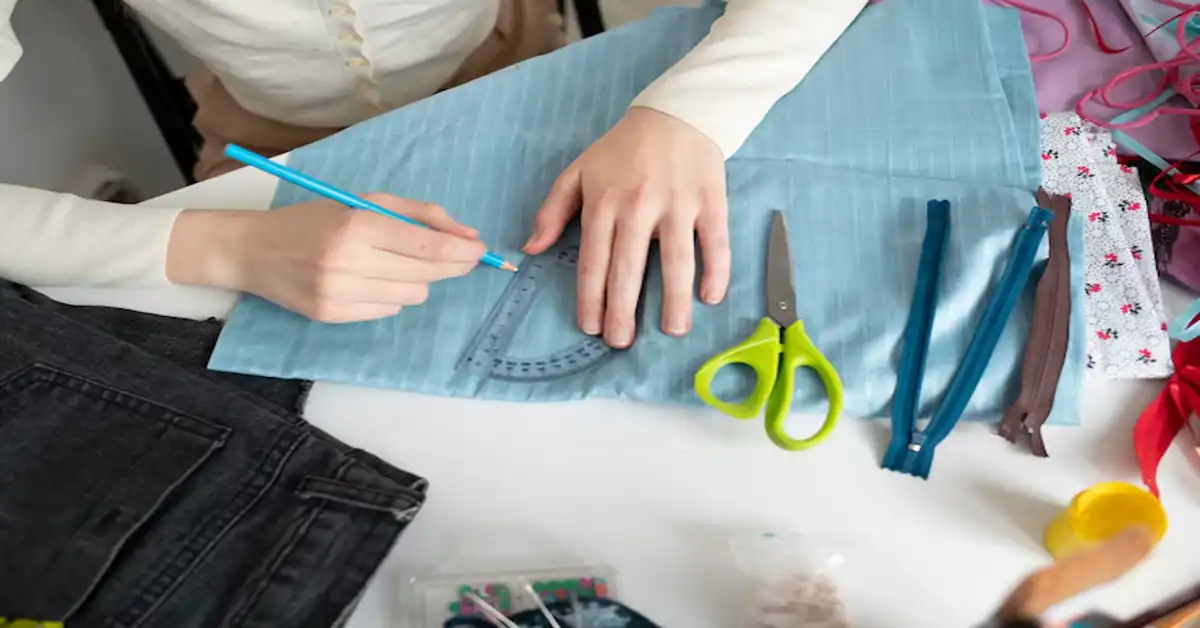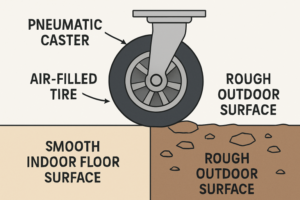In the world of textiles, fashion, and manufacturing, seams — known in German as Nahttypen — serve as the silent backbone of every garment, upholstery, or industrial fabric. While they often go unnoticed by consumers, their function, strength, and design play a vital role in the durability, appearance, and performance of fabric-based products.
From haute couture runways to aerospace engineering, the evolution of seam types reflects not only advances in materials and machinery but also shifting priorities in aesthetics, sustainability, and efficiency. This article explores the anatomy of Nahttypen, their classifications, real-world applications, and why a deeper understanding of seam types is more important today than ever.
READ MORE: UG17: An Emerging Signal in the Shifting Landscape of Design and Technology
The Anatomy of a Seam
Before delving into the types, it’s important to understand what a seam fundamentally is. A seam is the result of joining two or more layers of fabric using stitches. Seams not only hold the garment together but also affect its shape, strength, flexibility, and aesthetic. Different seam types are used depending on the material, intended function, and desired look of the final product.
The performance of a seam depends on several factors:
- Type of stitch
- Thread material and thickness
- Fabric behavior
- Seam finish
- Load-bearing requirements
Primary Classification of Nahttypen (Seam Types)
In general, seam types fall into a few main categories based on their structure and purpose. These can be broadly categorized as follows:
1. Plain Seam (Einfachnaht)
This is the most basic and commonly used seam. It involves placing two pieces of fabric right sides together and stitching along the edge, followed by pressing the seam open.
Applications: Everyday clothing, bedding, curtains.
Advantages:
- Easy to construct
- Cost-effective
- Suitable for non-stress areas
Limitations:
- Offers minimal strength
- Not suitable for stretch or high-tension areas
2. French Seam (Französische Naht)
A French seam conceals raw fabric edges by folding the seam inside itself. It’s sewn in two steps and is known for its clean, polished look.
Applications: Luxury garments, lingerie, delicate fabrics like silk.
Advantages:
- Visually appealing inside and out
- Enhances garment longevity
- Ideal for lightweight fabrics
Limitations:
- Time-consuming
- Adds bulk, not suitable for thick fabrics
3. Flat-Felled Seam (Kappnaht)
Used primarily in denim and workwear, this seam is durable and strong. The fabric edges are enclosed, and the seam is stitched twice for added reinforcement.
Applications: Jeans, uniforms, sportswear.
Advantages:
- Strong and long-lasting
- No raw edges visible
- Reinforced structure for heavy use
Limitations:
- Time-intensive
- Difficult to alter later
4. Bound Seam (Einfaschnaht)
Here, seam edges are enclosed with a fabric binding. It’s often used where seams are visible, and aesthetics are critical.
Applications: Bags, jackets, home décor items.
Advantages:
- Decorative
- Prevents fraying
- Adds structural stability
Limitations:
- Requires extra material and time
- Not suitable for soft draping garments
5. Double-Stitched Seam (Doppelnaht)
This involves two parallel lines of stitching for extra reinforcement. It is often used in high-stress areas where durability is critical.
Applications: Trousers, outdoor gear, military wear.
Advantages:
- Very durable
- Uniform appearance
- Adds tensile strength
Limitations:
- Requires precision
- Can be bulky on delicate fabrics
Specialty Seams for Technical Textiles
As technology integrates more into clothing and fabrics, seam types have evolved to accommodate smart textiles, heat-sensitive materials, and waterproofing needs.
6. Welded Seams (Geschweißte Nähte)
In technical applications, especially waterproof or fire-retardant fabrics, seams can be welded using heat or ultrasonic methods instead of thread.
Applications: Tents, rainwear, firefighting gear.
Advantages:
- Completely waterproof
- No thread, hence no wicking
- High-performance under stress
Limitations:
- Requires specialized machinery
- Limited flexibility
7. Taped Seams (Getapte Nähte)
Taped seams use a special adhesive tape over the stitching line to enhance water resistance.
Applications: Outdoor jackets, ski suits, sailing gear.
Advantages:
- Additional waterproofing
- Retains fabric flexibility
- Neat finish
Limitations:
- Tape can degrade over time
- Adds cost and production steps
8. Zigzag and Stretch Seams (Zickzacknaht und Stretchnaht)
These seams are designed for elasticity and used on stretch fabrics like jersey or spandex. They allow the seam to move with the garment.
Applications: Activewear, swimwear, undergarments.
Advantages:
- Flexible under tension
- Minimizes tearing
- Suited for knit fabrics
Limitations:
- Not ideal for woven fabrics
- Can appear less refined
Emerging Seam Trends in Sustainable Fashion
In the era of climate consciousness, seam types are being rethought from a sustainability angle. A growing trend involves minimizing unnecessary seam lines to reduce fabric waste. Moreover, designers now look at seams not only for function but also as aesthetic statements.
Key Movements:
- Laser-cut seams: Reducing need for stitching entirely.
- Modular seams: Designed for easy disassembly and recycling.
- Single-seam garments: Reduce production time and material waste.
These innovations are reshaping how Nahttypen are integrated into fashion collections and how consumers perceive the value of craftsmanship.
Seam Engineering in Smart and Technical Garments
The rise of wearable technology has given birth to conductive seams, where metal threads or fiber optics are integrated into the stitch line. These enable:
- Biofeedback collection (e.g., heart rate monitoring)
- LED integration for visibility or fashion
- Seam-driven control panels in garments
Seams now serve not just to hold fabric but to carry data, power, and signals — an engineering marvel as much as a tailoring feat.
READ MORE: Understanding 185.63.253.300: What an IP Address Reveals About Our Digital Infrastructure
The Role of Seam Types in Industrial Manufacturing
Beyond fashion, Nahttypen influence performance in automotive, aeronautical, and medical textiles. In airbags, seams must be engineered to burst at exact pressures. In surgical gowns, they must resist pathogens. In car upholstery, aesthetics combine with durability under stress.
Industrial Considerations Include:
- Seam fatigue resistance
- Thermal insulation properties
- Abrasion resistance
- Chemical exposure compatibility
Visual and Cultural Significance of Seams
Culturally, seams have moved beyond function into storytelling. Japanese boro textiles highlight patched seams as symbols of sustainability and resilience. Designers like Rei Kawakubo and Martin Margiela have turned inside-out seams into avant-garde statements.
Today, the visible seam is a design choice. Topstitched seams emphasize contours, suggest structure, or hint at gender-neutral construction. The seam has, arguably, become a canvas for commentary as much as craftsmanship.
Conclusion
In the stitched framework of fashion, industry, and innovation, Nahttypen represent more than a means to an end. They embody technique, function, and artistry. Understanding different seam types unlocks a new level of appreciation — for the clothes we wear, the tents we camp in, and the car seats we rest on. In an age of mass production and fleeting trends, the seam remains a symbol of the enduring bond between fabric and form, craft and creativity.
Whether you’re a fashion student, textile engineer, or simply a curious consumer, knowing your Nahttypen means looking at the world a little more closely — stitch by stitch.
FAQs on Nahttypen
1. What is the strongest type of seam used in garments?
Flat-felled seams are among the strongest due to their double-stitch construction and enclosed edges, commonly used in jeans and uniforms.
2. Why are French seams used in luxury garments?
French seams conceal raw edges, creating a clean and polished look that’s ideal for delicate fabrics like silk or chiffon.
3. Are there eco-friendly seam types?
Yes, techniques like modular seams, single-seam garments, and minimal seam designs are considered more sustainable due to reduced material waste and easier recyclability.
4. What is a taped seam and when is it necessary?
A taped seam has an adhesive strip applied over the stitch line to improve waterproofing. It’s commonly used in rainwear and outdoor gear.
5. How do seams affect garment durability?
The type of seam significantly influences how well a garment withstands wear, stress, and washing. Double-stitched or flat-felled seams provide greater durability than simple plain seams.









